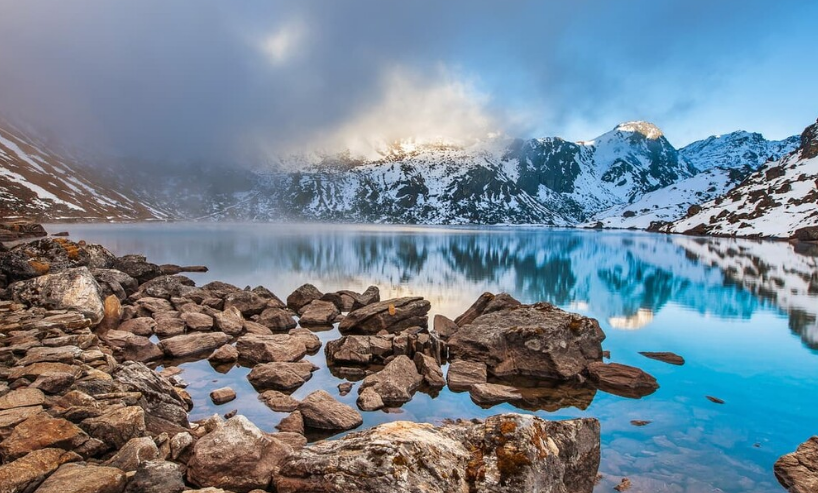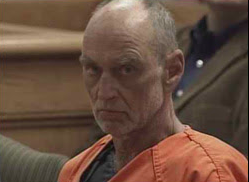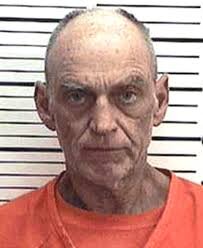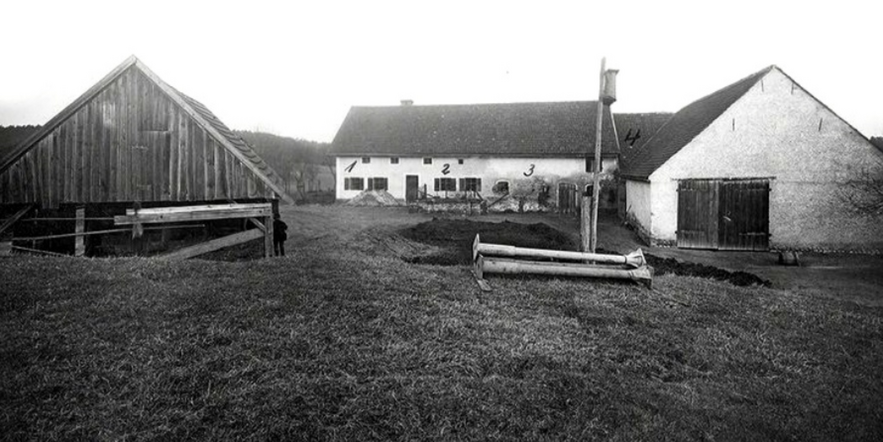The Nepal Backpacker Murders in Langtang National Park
Despite the beauty of Nepal’s Langtang Park, it has had a dark past, with several visitors disappearing or being murdered in recent decades.
The Nepalese authorities have been accused of indifference and prioritizing the tourist industry without warning women of the dangers of hiking alone in the world’s most famous mountain range.
In the year 2000, a British trekker was found dead in the Langtang River, and the fishermen who reported it were imprisoned for a decade. All the villagers in the Langtang area say that the fishermen were innocent and that the people who did it were never caught.
Rachel Crowter, whose brother Julien Wynne disappeared in the Everest region in 2008, says her family searched for a year before stopping. “I do not see what else we can do. The whole Nepali government and system are corrupt. There is no one to investigate. It leaves our family feeling totally frustrated and helpless.”
For those trying to work with Nepali authorities, often contacts and witnesses are fired, jailed, or promoted, and police investigations are consistently underfunded.
It’s hard to determine how many trekkers, male or female, have gone missing over the years since the Nepali police have always failed to keep records of exactly how many have been the victims of violent crime. Tourists in Nepal come from dozens of countries, meaning news about them gets scattered across the globe. According to Christopher Patch, once Deputy Consular Chief at the U.S. Embassy, dozens of Western trekkers have vanished on popular trekking routes in recent decades.
A current list of missing trekkers in Nepal is available here. The article includes some of the more infamous cases since 2000 but is not exhaustive.
Nepal and Langtang National Park
Nepal is officially called the Federal Democratic Republic of Nepal and is a landlocked country in South Asia. It is mainly situated in the Himalayas but also includes parts of the Indo-Gangetic Plain. It borders the Tibet Autonomous Region of China to the north and India to the south, east, and west. At the same time, it is narrowly separated from Bangladesh by the Siliguri Corridor and from Bhutan by the Indian state of Sikkim.
It has a diverse geography, including fertile plains, subalpine forested hills, and eight of the world's ten tallest mountains, including Mount Everest, the highest point on Earth. Kathmandu is the nation's capital and the largest city.
Within Nepal, Langtang National Park was established in 1976 as Nepal's first Himalayan national park and the country's fourth protected area. It exceeds an elevation range of 6,450 m (21,160 ft) and covers an area of 1,710 km2 (660 sq mi) in the Nuwakot, Rasuwa and Sindhulpalchok Districts of the central Himalayan region.
Céline Henry and Sabine Gruneklee
Sabine Gruneklee
Céline Henry
Back in 2005, French diplomats first raised the alarm, discovering blood, clothing and other items belonging to Celine Henry, 32, and Sabine Ursula Grunekleein, 32, in the Nagarjun Forest, a wildlife reserve near the Nepali capital, Kathmandu, on the southernmost edge of the Langtang-Helambu trek.
The first to disappear was Celine Henry, 31, from France, who signed the visitors' register at Nagarjun on September 3, 2004, but she didn't sign out. Her family reported her missing to the French embassy a month later.
The French ambassador in Nepal, Michel Jolivet, went to retrace Celine’s steps, and he discovered a water bottle, a black jersey, and a bra and called the police. They found fresh blood stains and an area of flattened grass nearby. But what they had found was not Celine’s murder scene but Sabine Gruneklee, from Germany.
Sabine from Munich was last seen on October 16, 2004, and did not arrive at the airport on the 18th to meet her friend Dolan as planned.
A further search found Celine’s keys and pages from her passport and Sabine’s driver's license.
"It seems that there is a serial killer," “We've found things there from both ladies, and it seems the culprit is the same”, said police Superintendent Pitambar Adhikari.
The case had eery similarities to several murders of backpackers in Asia in the 1970s by the notorious Charles Sobhraj. Among Sobhraj's 20 suspected victims, two died in Kathmandu.
Charles Sobhraj (born Hotchand Bhawnani Gurmukh Sobhraj, 6 April 1944) is a serial killer, fraudster, and thief who preyed on Western tourists traveling on the hippie trail of South Asia during the 1970s. He was known as the Bikini Killer because of the attire of several of his victims, the Splitting Killer and the Serpent for "his snake-like ability to avoid detection by authorities".
It is thought that Sobhraj murdered at least 20 tourists in South and Southeast Asia, including 14 in Thailand. He was convicted and jailed in India from 1976 to 1997. After his release, he returned to France. Sobhraj went to Nepal in 2003, where he was arrested, tried, and given a life sentence. On 21 December 2022, the Supreme Court of Nepal ordered his release from prison because of his old age, after he had served 19 years of his prison term and on 23 December, he was released and deported to France.
Described as "handsome, charming and utterly without scruple", he used his looks and cunning to advance his criminal career and obtain celebrity status; Sobhraj has been the subject of four biographies, three documentaries, a Bollywood film titled Main Aur Charles, and the 2021 eight-part BBC/Netflix drama series called “The Serpent”.
Kristina Kovacevic
In 2006, Kristina Kovacevic, 41, a German trekker, went missing, and her decomposed body was found in the Solukhumbu region in May 2006. Authorities blamed an accident, but family members remain unconvinced.
Her sister Karoline Stallcup, who had been to the Khumbu region to look for her said, “A trekking guide came up to me in Namche and told me that he had come across my sister’s body. So I trekked all the way to the spot and found that my sister had fallen off a 200-metre cliff”. Karoline suspected foul play in her sister’s death. She said Kristina may have been robbed and pushed down the cliff. “Her belongings — money, credit cards, sleeping bag, shoes, are all missing. All she had were the pants and the shirt she had been wearing. However, I cannot say for sure that she was killed because there is no proof”. The last time she heard from her was on March 13. Kristina had sent an e-mail to Karoline from Namche Bazaar. She may have died on March 15.
Aubrey Sacco
In April 2010, after traveling through India and Sri Lanka for five months, 23-year-old American Aubrey Caroline Sacco decided to finish her trip of a lifetime with a solo trek in Nepal’s Himalayas.
In Sri Lanka, she’d searched for octopus in the Indian Ocean and she volunteered at an orphanage and studied yoga at an ashram in Mysore, India. After that, she traveled to Darjeeling, India.
Aubrey told her family she would be hiking in Langtang National Park, on the Tibetan border, and would check back with them in a few days. They never heard from her again.
She’d been in near-constant contact with her parents when she started a solo hike in Langtang on April 21, 2010. By early May 2010, her mother, Connie, contacted the U.S. Embassy in Kathmandu. Embassy officials told her that civil unrest, a Maoist uprising, might have delayed Aubrey in the mountains. On May 16, Paul, Aubrey’s father, flew to Kathmandu to search for his daughter, and he was joined by his elder son, Crofton, then 25.
She was last seen in Langtang village on April 22, 2010, 35 miles north of Kathmandu. A place later destroyed by a landslide caused by an earthquake in April 2015. Villagers initially told Aubrey’s parents she left in the afternoon, but some later changed their stories, saying they hadn’t seen her.
American Scott MacLennan joined the search. He led medical trips in Langtang for a decade, and he suspected Aubrey fell victim to the young Army soldiers who act as rangers in Nepal’s national parks and who have a reputation for abusing women. “None of the girls who ever worked for me in my medical clinic would stay the night because it was next to an Army post”.
One Dutch ex-pat, who ran a rescue organization in Pokhara, claims Aubrey’s disappearance was sacrificial, the work of witches who worship Kali, the Hindu goddess of death. Several Nepali men blame Aubrey, saying she must have acted “too free and frank,” inviting her own rape and murder. Other theories at the time included bizarre tails like lamas were holding her in a remote monastery, or she was abducted by sex traffickers and spirited away to Pakistan. A teenage Tamang psychic claimed that three boys buried her beneath a pile of rocks, where the forest transitions to dust-colored tundra.
But it could have been the river, as some locals suggest. The trail follows the steep banks in places and crosses the water many times. Aubrey wouldn’t be the only trekker to fall victim to Nepal’s dangerous terrain.
The family traveled to Nepal several times, building local contacts to try and locate Aubrey. They got key politicians in their home state of Colorado and even the FBI working on the case to turn up the heat on the Nepalese government. But a thorough search around the area around Langtang at the time and subsequent searches turned up no signs of Aubrey or her remains.
Connie Sacco, Aubrey’s mother, said of the fact that the authorities had refused to use search equipment, “This makes us suspicious that the government and police may not want to find out what happened to Aubrey”. Nepalese police defended their actions, saying they had scoured the area and had even sought help from witch doctors.
Paul and Connie returned to Nepal for a third time in April 2013. In meetings with witnesses, they learned of reports that put soldiers near the Namaste teahouse on the day Aubrey departed. Three months later, they received news that Aubrey’s killers had been caught. On July 31, 2013, Dawa Lama, a Nepali man from Langtang, phoned to tell them that the police had arrested three men and that they’d confessed to murdering Aubrey.
Consular Section Chief Patrick McNeil of the U.S. Embassy learned that an undercover Nepali police officer met a man who told him that he had murdered Aubrey. The officer befriended the man, who later implicated two accomplices. The Nepali newspaper Republica reported that one of the suspects had Aubrey’s camera. News circulated that pieces of Aubrey’s clothing were found in another suspect’s home. All three men were arrested.
However, on August 1, the family learned that the Nepali police inspector had doubts about the informant, and he had changed his story, naming people who didn’t exist. Based on no physical evidence, the three suspects were released after 28 days in custody. Following that, no further arrests were made, and the case went cold.
Lena sessions
Lena Sessions, 23, from the US, was hiking alone in December 2011 in the Langtang area when a man wearing a black mask approached her with a tribal kukri knife and threatened her. She told police she managed to escape after her assailant threatened to kill her if she did not submit to a sexual assault.
Debbie Maveau
On June 14, 2012, the search for 23-year-old Belgian hiker Debbie Maveau, missing in Nepal for ten days, came to a gruesome end when her decapitated body was found near a hiking trail in Langtang National Park.
She had set on a six-day hike to Gosaikund, a lake with deep significance to Hindus, on May 31 and was expected to return to Belgium on June 9, but never arrived.
She was not raped before she was murdered, with her underwear intact, according to authorities. She also still had her camera and about $100 worth of Nepalese rupees on her, so robbery was ruled out.
Exclusive articles for members of StrangeOutdoors that are not available elsewhere on the site.
See the list of exclusive member articles here
Read other true crime stories
Sources
https://en.wikipedia.org/wiki/Nepal
https://en.wikipedia.org/wiki/Langtang_National_Park
https://www.backpacker.com/trips/gone-girl-aubrey-saccos-disappearance-hiking-in-nepal/
https://www.taipeitimes.com/News/world/archives/2012/03/18/2003528101
https://www.dailymail.co.uk/news/article-2068864/Family-missing-American-hiker-Aubrey-Sacco-Nepal-releases-image-person-interest.html
https://www.dailymail.co.uk/news/article-2165297/Debbie-Maveau-23-decapitated-hiking-Himalayan-mountains-Nepal.html
https://www.smh.com.au/world/killer-in-nepal-is-hunting-women-tourists-20051211-gdmm13.html
https://en.wikipedia.org/wiki/Charles_Sobhraj
https://thehimalayantimes.com/kathmandu/german-trekkeraes-body-found-sister-suspects-foul-play
http://www.nepal-dia.de/int__England/EV_missing_persons_in_the_Hima/ev_missing_persons_in_the_hima
https://www.missingtrekker.com/missing-trekkers/
















